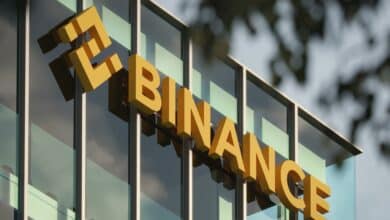
Introduction
The cryptocurrency market is not just limited to Blockchains. It is extended into DeFi protocols that are present as an additional protocol on every blockchain network.
Investors who wish to make the most of their trading portfolio can enhance their profits by taking a peek into these DeFi platforms and learning about how to use them in tandem with their baseline service provider.
This article is going to teach the investors about an important DeFi project hosted on the Ethereum network named Compound.
What is Compound Protocol?
Compound Protocol also known as COMP is a DeFi lending and borrowing protocol hosted on the Ethereum blockchain. The unique feature of COMP is that the interest rates on this forum are set by an algorithm that tracks the activity happening in all its liquidity pools.
The investors who possess cryptocurrencies under their ownership can lend or they can use the services of COMP if they are looking for a cryptocurrency loan.
The best quality of this DeFi project is that the credit contracts happen much faster and without any hassles present in a traditional financial system.
The important thing to note about COMP is that it is one of the oldest and largest DeFi projects in the market. The Total Value Locked or TVL is estimated to be around $2 billion in the combined smart contracts of the Compound.
Countless DeFi projects have ingrained the Compound Protocol in their native projects as a lending and borrowing plug. It is also part of several yield aggregation DeFi protocols. In addition to DeFi developers, this project is also used by Non-technical users.
Retail investors can draw out loans from COMP by using a set of specified cryptocurrencies as collateral.
Origin of Compound
The debut of the COMP happened in 2018 in San Francisco by a company named Compound Labs. When COMP was introduced, most cryptocurrency lending platforms were still in the development phase.
The main version of Compound that is used as mainnet to date is called V2 and it was introduced in 2019. The Compound project was able to collect a considerable amount of funding from Venture Capital firms such as Andreessen Horowitz, Polychain, and Bain Capital Ventures.
The second version of COMP known as V2 was able to several new upgrades including cToken. cToken is a cryptocurrency that streamlines the main underlying function of this DeFi project based on its trading volume.
In August this year, COMP introduced the third version called V3 which was created in parallel with the V2. This third version attempted to make the user interface of Compound easier for mobile application users and it downsized the number of cryptocurrencies in comparison to the last version.
The majority of the trading activity on COMP is present on the V2 mainnet while V3 is expected to gain more traction in the future.
How does Compound DeFi Protocol Work?
The most important feature of the COMP lending protocol is its interest settings. The interest for borrowing and lending is decided by its internal algorithm based on the supply and demand states for the given cryptocurrency within the Compound.
Open Price Feed is a protocol on COMP where all the coin prices are submitted furthermore the Chainlink oracle also imports prices of various cryptocurrencies from a multitude of cryptocurrency exchanges for comparison.
In this manner, COMP can determine the interest rates for a given cryptocurrency based on its liquidity in the market. If the supply increase or the demand decreases in the spot market, the algorithm of COMP will change and adjust the interest rates for borrowers and lenders accordingly.
All the updated interest rates are listed on the market page section on the Compound website and mobile application.
On the other hand, DeFi developers can also integrate this protocol into their projects using the functions provided for its Dapps collaboration. Cryptocurrency protocols like MetaMask, WalletConnect, Tally Ho, and Ledger are all protocols that are integrated with COMP.
The Main Functions and Features of Compound Protocol
Here are some of the most important and basic features that COMP can offer for its mobile users and to the dapps that are using it for integration:
Lending
One of the most basic features available on COMP is lending. Investors and institutions can create an account with COMP to start lending. Investors who have some cryptocurrencies present in their own can use them to earn interest income by putting them up for lending.
It is important to note that there are many DeFi lenders present however lenders should make sure that their funds don’t turn into bad debt. Bad debt is when a lending position is unable to be recollected or a loan is marked as unrecoverable.
Since COMP uses collateral as mandatory for borrowing, it means that it is a safe and secure way to lend. Furthermore, the collateral account will also keep earning interest income within the given protocol.
Therefore, investors can rest assured that they keep getting the value of their lending cryptocurrency back at regular intervals. The lending protocol within COMP is denominated by supplying.
On V2 versions there are around 20 cryptocurrencies that investors can supply or lend. The top 5 supply currencies on COMP V2 are USD coin, Dai, Ethereum, Wrapped Bitcoin, and Tether.
Meanwhile, the top 5 V3 supply currencies are ETH, Wrapped Bitcoin, COMP token, Chainlink, and Uniswap. The users who are lending their cryptocurrencies are going to receive a cToken for every ERC-20 token supply.
For example, if a user supplies a Dai tokens they will get cDai tokens and they are supplying ETH, they will be issued eETH tokens, and so on. It is important to note that cTokens play an important role in COMP functioning.
They are also a crucial way to confirm the coin deposits but they offer several other functions as well. With lending, investors can start earning interest on their crypto savings furthermore they also become eligible for borrowing other cryptocurrencies on this protocol.
Borrowing
Borrowing is conditioned with lending on the COMP network. It means that if a person wishes to borrow some funds from this DeFi protocol they have to become a lender first. This system ensures security for everyone operating on the network beyond the basic protection of collateral.
It is important to note that each user also depends on lending to get a borrowing limit. Take, for example, if a person has lent 100 Dai tokens on COMP, the protocol will allow them to borrow based on the market value of their supply amount.
The borrowing limit is decided by the Open Price Feed protocol on COMP mentioned earlier. The users can also lend a multitude of cryptocurrencies and the OPF will issue a borrowing limit for them based on the aggregate of their supply.
Most coin borrow limits are around 60 to 80 percent of the collateral reserves. COMP in this manner is an over-collateralized system that ensures greater security for everyone on the network.
The borrowers on the network are also issued cTokens as confirmation. The borrowers have to pay interest depending on their cToken liabilities.
Redeem
When a borrower has returned their debt, they are ready to redeem their loan amount from COMP. As long as the borrowers have cleared their outstanding balance, they can redeem their loan amount at any given time.
At the same time, the investors do not have to deal with any type of time duration limits or minimum supply requirements. There are also no withdrawal penalties on COMP making it ideal for investors.
The investors are connected with a dynamic collection of LPs at all times. The lent positions can be closed by redeeming cTokens that allow the protocol to free their lent reserves back to the owners.
Liquidation and Risk Management
The investors on the COMP network are under an obligation to maintain the account’s health at all times. Account health is a way for COMP to measure how close the user account is to the risk of liquidation.
COMP determines account health using the ratio of supplied funds to the total amount of borrowed cryptocurrencies. If the account health starts to fall lower than the requirements, COMP can automatically liquidate the account and send the collateral to the lender.
There are no centralized systems or regulations in place in COMP to liquidate accounts. This liquidation protocol has been added to COMP as an additional way to mitigate risks for lenders.
All the automatic liquidations on COMP are carried out in a decentralized manner by nominating users who are called liquidators. These liquidators can in return earn a portion of the liquidated account funds as a reward for their services.
Native Tokens on Compound DeFi Protocol
Now that the inner workings and mechanics of COMP have been made clear, investors can learn about the native token attached to the COMP project.
There are two main token issues in this DeFi project namely COMP and cToken. Here are some interesting features that are offered by both these tokens:
cToken
cTokens are the central DeFi token that is essential to the important functions of COMP DeFi protocol. The investors are issued cTokens when they lend their cryptocurrencies and also when they borrow them.
The first function of the cTokens is to act as the confirmation for the deposits and represent the total amount of the supply in COMP. An additional function of cTokens is that it also keeps a record of all the interest income created from the lent funds.
Therefore, the value of cToken can keep growing concerning time. On the other hand, cTokens are also issued to investors when they borrow. Since the value of the cToken is dynamic, it can represent the difference between the interest an investor has earned and the interest that they have to pay.
It is important to note that cTokens are not traded in spot markets outside of COMP protocol anywhere.
COMP
COMP token is the spot trading issue of the COMP project. It is an ERC-20 token and it is used for governance purposes within the COMP protocol. The holders of the COMP tokens can cast votes or delegate their voting rights. In this manner, all the major decisions on the COMP protocol are done in a decentralized and democratic manner.
On account of its utility, COMP has become the ninth-largest governance coin by market cap in 2022. At press time, per unit price of COMP is $37.22 with a trading volume of $16 million according to CoinMarketCap, where it is also the 102nd largest cryptocurrency with a market cap of $270 million.
Top 5 Cryptocurrency Lending Platforms in 2022
Now that the investors have learned about an important lending protocol like COMP, they would want to know about its best substitutes. Some of them are mentioned as under:
AAVE is based in Switzerland and it has been operational since 2017. It is a decentralized LP that is integrated with 7 blockchain networks and it is also connected with 13 exchange platforms.
The lenders on AAVE can take user interest rates calculated in real-time based on its incentivization protocol. Therefore, the APY for AAVE is not fixed or predetermined. The investors can earn up to 18% APY using stablecoins like USDT and BUSD.
The borrowers on AAVE can take advantage of low APYs as much as 0.1% for tokens like MKR, 0.5% for AAVE tokens, and as little as 1.3% or BUSD. The investors need to note that the interest rates on stablecoins on AAVE are comparatively higher.
On the other hand, the dynamic interest rates on AAVE make it challenging for investors to plan a strategy but it is considered ideal for borrowers on account of its low APY rates.
MakerDAO
MakerDAO is an open-sourced and decentralized protocol for borrowing and lending. It is sometimes known as the Maker. MakerDAO uses the dual token model based on MKR and Dai. Both MKR and Dai are ERC-token.
MKR is the main governance token while Dai is pegged to USD. Users can earn the Dai tokens on Maker when they have deposited around 25 supported cryptocurrency assets as collateral in the liquidity vault.
On the other hand, Dai is also used to access liquidity pools to loan. However, when an investor is trying to borrow from Maker, they need to make sure to contribute to advance. This is another layer to ensure collateral from the borrowers and increase their exposure.
The curve is an Ethereum-based decentralized exchange and liquidity protocol. This network is specified for stablecoin-related lending and borrowing. The slippage rates on all the tradeoffs made on Curve finance are considerably smaller on account of its algorithm.
In addition to acting as a stablecoin lending network, Curve also acts as a liquidity pool for other lending DeFi protocols. Some of the important liquidity tokens present within Curve LP are Compound, PAX, REN, BUSD, sUSD, sBTC, and Y.
Each of the aforementioned seven curve pools has the ability to mint native ERC-20 tokens for the benefit and record keeping for its liquidity providers. The stakers can use these liquidity tokens for swaps and exchanges with various other cryptocurrency assets.
Uniswap is one of the most well-known and widely used decentralized lending platforms in the cryptocurrency market. It is also hosted on the Ethereum blockchain. The great thing about Uniswap is that it is also open-sourced and used for both liquidity and lending.
Investors can swap ERC-20 tokens in a decentralized manner on Uniswap. At the same time, they can also earn a fee for contributing to this LP.
Uniswap is a non-custodial exchange. Therefore, the investors are liable to keep their tokens under their ownership. The user interface of Uniswap is deliberately easy so that more people can use it without getting trapped.
Meanwhile, the investors have the option to create a new LP based on any ERC-20 token and they can also become liquidity providers in an existing pool on Uniswap.
Every Liquidity pair is represented by an ERC-20 token that is easy to transfer and unique. The TVL estimation of Uniswap is $7.41 billion.
InstaDapp
It is another Ethereum-based decentralized and multipurpose DeFi protocol. It has been operating since 2018 that serves as a swapping, lending, borrowing, leveraging, liquidity provider, and many other services.
The unique feature of InstaDapps is that it is a lending aggregator and investors can switch between different lending platforms using the same account with one click. On account of its junction-like nature, it has gained popularity among investors.
Users can navigate to a multitude of lending protocols using the same wallet address like Coinbase or MyEthereWallet. At the same time, they can also take advantage of several services such as borrowing, lending, swapping, trading, etc.
Conclusion
The Compound DeFi protocol is considered one of the most popular cryptocurrency lending options in the market. It means that investors can use it with security and without worrying about losing hold of their borrowed or lent funds.
The nature of this DeFi protocol has made it easier for leverage traders and other businesses to draw funds securely without having to deal with any restrictions and limitations attached to the centralized financial networks.
Tokenhell produces content exposure for over 5,000 crypto companies and you can be one of them too! Contact at info@tokenhell.com if you have any questions. Cryptocurrencies are highly volatile, conduct your own research before making any investment decisions. Some of the posts on this website are guest posts or paid posts that are not written by Tokenhell authors (namely Crypto Cable , Sponsored Articles and Press Release content) and the views expressed in these types of posts do not reflect the views of this website. Tokenhell is not responsible for the content, accuracy, quality, advertising, products or any other content or banners (ad space) posted on the site. Read full terms and conditions / disclaimer.







